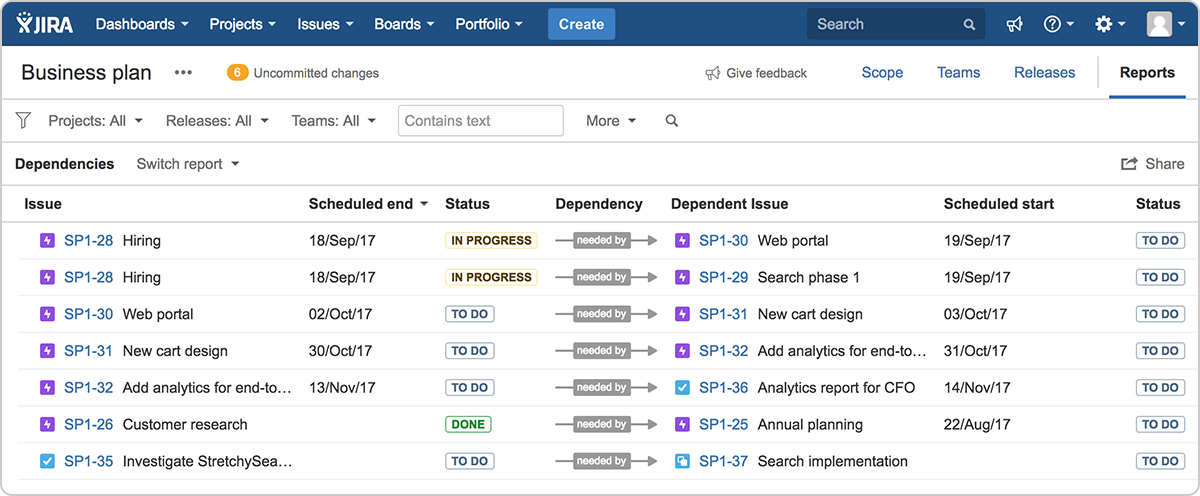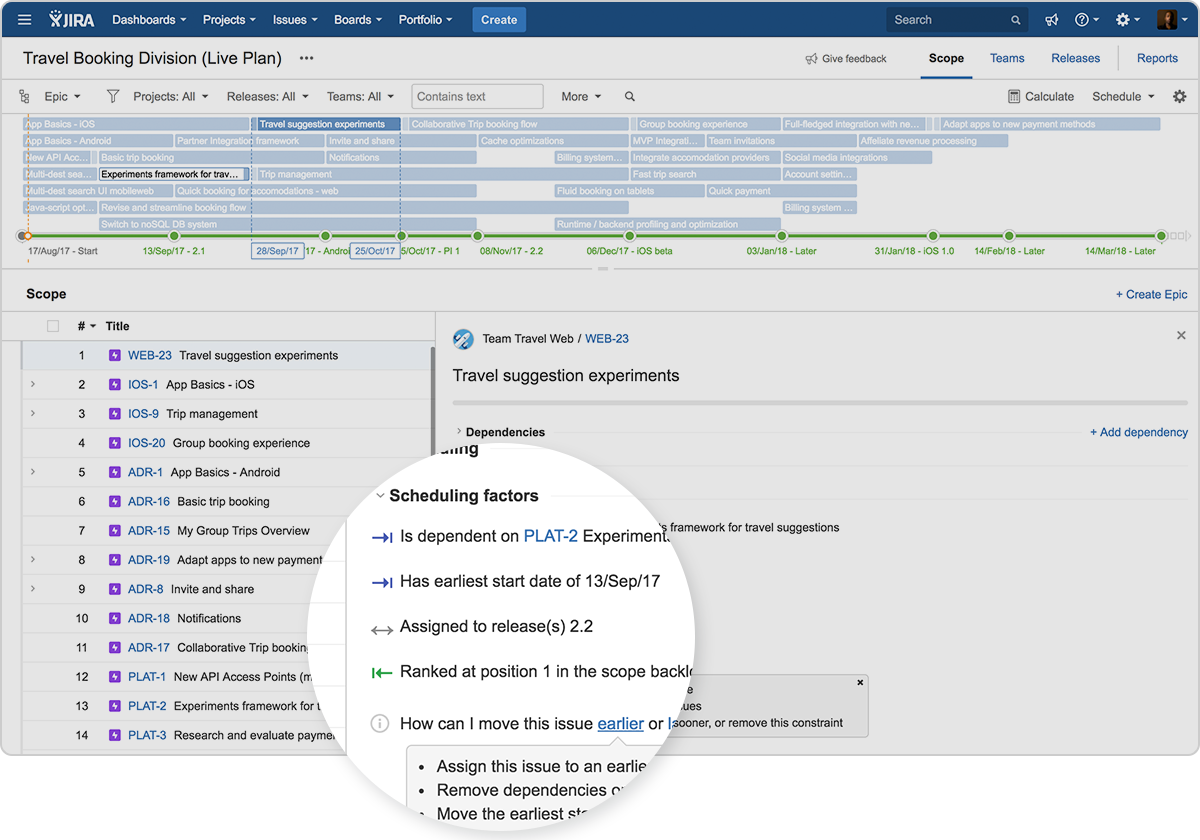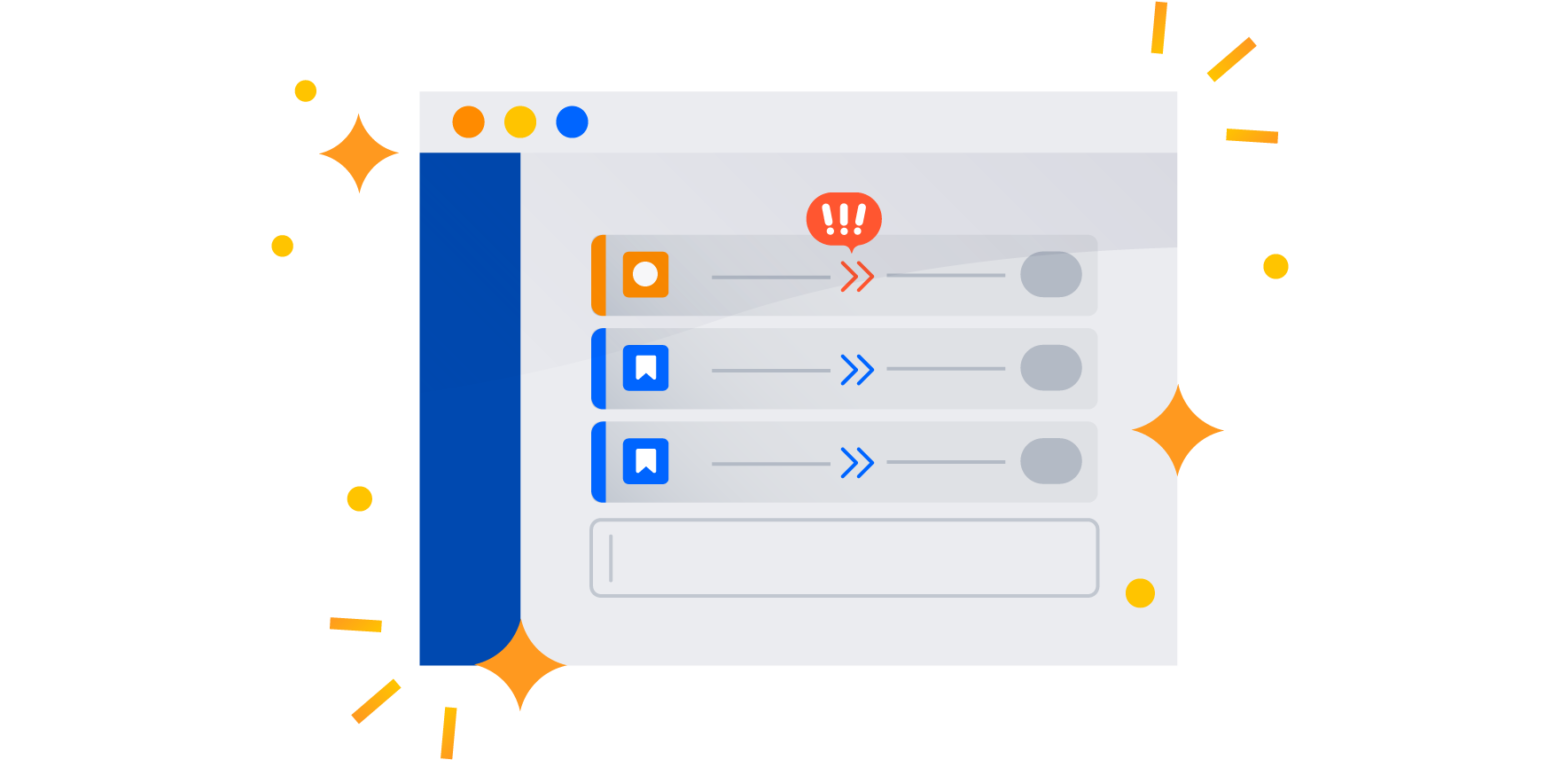Every good agile team needs to know, is everything on track? And if it’s not, why? That is why Portfolio for Jira has launched a new dependency report that shows you dependencies across multiple teams and projects in a single view. It helps you avoid possible project delays and will save you from scouring individual Jira issue links for updates on dependent work items.
Besides the dependency report, we’ve shipped a feature that highlights scheduling factors on an individual issue. Keep reading to learn more about these new features and how they can help scale agile practices across software development teams.
Try Portfolio for Jira for free
Visualize dependent relationships between work items in Jira
A key component of scaled agile is the ability to keep everyone on the same page. Last minute surprises happen even to the best of us, but they should not be the norm. In order for teams to avoid missing release dates, someone needs to get visibility into the status and progress of agile development and dependencies across multiple teams and projects.
Whether this someone is a product manager, program manager, or project manager, without Portfolio for Jira, a lot of this effort to track dependencies is spent shoulder tapping and relying on links between Jira issues. This time-consuming and manual process leaves a lot of room for error, because you are relying on memory and word of mouth to manage risk. What is really needed is a way to see all dependencies in a single view for an upcoming release. And that is exactly what the new dependency report in Portfolio for Jira does: it visualizes dependent relationships between Jira work items and surface dependencies within a single report.

By providing Jira and Portfolio for Jira customers with the ability to monitor and filter dependencies across multiple teams and projects, individuals responsible for project delivery are able to manage, communicate, and maintain oversight with little effort. No more wondering if a release is really on track because of the clarity that this report brings to the table. It is also this clarity that gives customers a new sense for what needs to be watched and managed more carefully to ensure project success.
And this is where the importance of risk management comes into play. For agile teams, risk management means being proactive instead of reactive. You can filter the dependency report to see all the respective blocking items that are running up against a deadline. This empowers you to proactively call them out and take action to mitigate risk.
Know how work items are scheduled in your Portfolio for Jira plans (Server only)
For those not familiar with Portfolio for Jira’s algorithm, it takes Jira data and automatically calculates a dynamic roadmap based on various factors like issue rank, capacity, dependencies, release assignment and more. It will also automatically schedule issues for you based on these listed variables.
In order to understand how things are scheduled or what will happen if you want to move an issue to an earlier or later date, Portfolio for Jira launched new scheduling information on issues to highlight all of the scheduling factors that affect an issue.

This feature is all about understanding the plan at a meta-data level. Lets say you have put in all the relevant data to your issues and calculated a plan. But, the output schedule looks different from how you expected it to look based on your inputs (e.g one issue is scheduled far later than expected).
Now you can look at the issue’s scheduling factors to inform you about what particular variables influenced its placement as well as tips to move it earlier or later. It might suggest you remove the dependency or move it out a sprint. This diagnosis process also help customers become more familiar with all the variables taken into account when using Portfolio for Jira. It’s also a forcing function for teams that want to practice agile at scale. In order to get the most accurate schedule you need to better inspect, adapt, and plan, which for agile means estimating, tracking velocity, consistent backlog grooming, and keeping communication flowing across multiple teams.
Inspect, adapt, and plan with Portfolio for Jira
With increased visibility, large organizations can communicate, iterate, and continuously deliver valuable software to customers. It is Portfolio for Jira that brings visibility to Jira and helps individuals responsible for project delivery across multiple software teams get visibility into the status and progress of agile development; this seamless integration brings clarity to how teams can iterate, adjust, and improve their development practices.
Server: Other new updates include the ability to share programs as a report much like you can share reports on your plans to stakeholders. Learn how to share programs schedule and scope views, along with what else released in Portfolio for Jira 2.5 in the release notes.
Cloud: Find details on how to use the dependencies report in our documentation.
